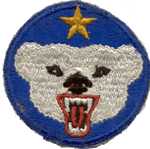World War II in the Aleutians - Shemya (APO 729)
January 26, 1943 to January 27, 1946
1. Recap of Army Facilities
Ft. Benjamine Harrison, Indiana
Ft. McClellan - Anniston, Alabama
Ft. Lawton - Seattle, Washington
4. Shemya
7. My Outfit
8. My Buddies
12. Potpourri
14. Coincidences
CIVILIAN CONTRACTORS
The relationship between servicemen and civilians doing work for the
government was not always harmonious. One of the irritations was
the disparity between enlisted army pay and the civilian pay scale.
Ours ranged from $800 - $1,200 per year, depending on rank and theirs
was $15,000 - $20,000, depending on their vocation. Most G.I.'s could
and did the same type of work as civilians, ie., driving trucks, operating
cranes, bull-dozers, etc. After one year, the civilians who didn't sign a
new contract, could return home - and with their savings, buy a house
and furnish it (based on 1940's dollars).
There were some personal incidents,where I was involved, that also created
problems. Twenty-four
of us left
tanker, manned by the civilian Merchant Marine. Our "B" bags were
stored below, containing the special artic clothing needed to survive the
nasty Winters. We were dropped off at
a sea-going tug. Sadly, 3 or 4 days after the tanker left for the States, we
had access to those "B" bags and found them pilferred. An analogy of this
would be to take away a soldiers rifle, then send him into battle. Since we
were all Privates without any clout, our complaints were shrugged away.
Those Merchant Marines were either the warmest sailors around or made
a financial killing by selling those very expensive articles.
Fortunately, many months later, when I was promoted to Supply
Sergeant, I found "inventive" ways to replenish the loss for the boys.
Another incident - - - - twice a year, each soldier was issued a case of
3.2 beer (half the alcohol content of regular). 60 cases for our outfit
arrived as I was closing down and locking up the Supply Hut. Some
civilian contractors, doing electrical work (who were quartered on the
other side of the
I was awakened about
and the beer gone. Our Officer in charge was reluctant to approach
the Island Commander to persue the complaint.
He suggested that I move my cot into the Supply Hut and sleep there,
leaving my buddies and all human contact behind. We had some strong
words exchanged. The result was a compromise - - - whenever there
were valuables worth stealing in the Supply Hut, I'll sleep there that
night with a loaded rifle.
Finally, 26 months later, when about 900 of us boarded a troopship
on
our journey back to
It appears that the ship-owners are allotted a reimbursement for food,
per passenger, per diem.
Try eating steamed rice as the main entree for breakfast, lunch and
dinner over a 14 day period.
I'm sure that the few Army Officers we had aboard fought for our
rights while they dined with the Captain and his crew!
What can I say?
